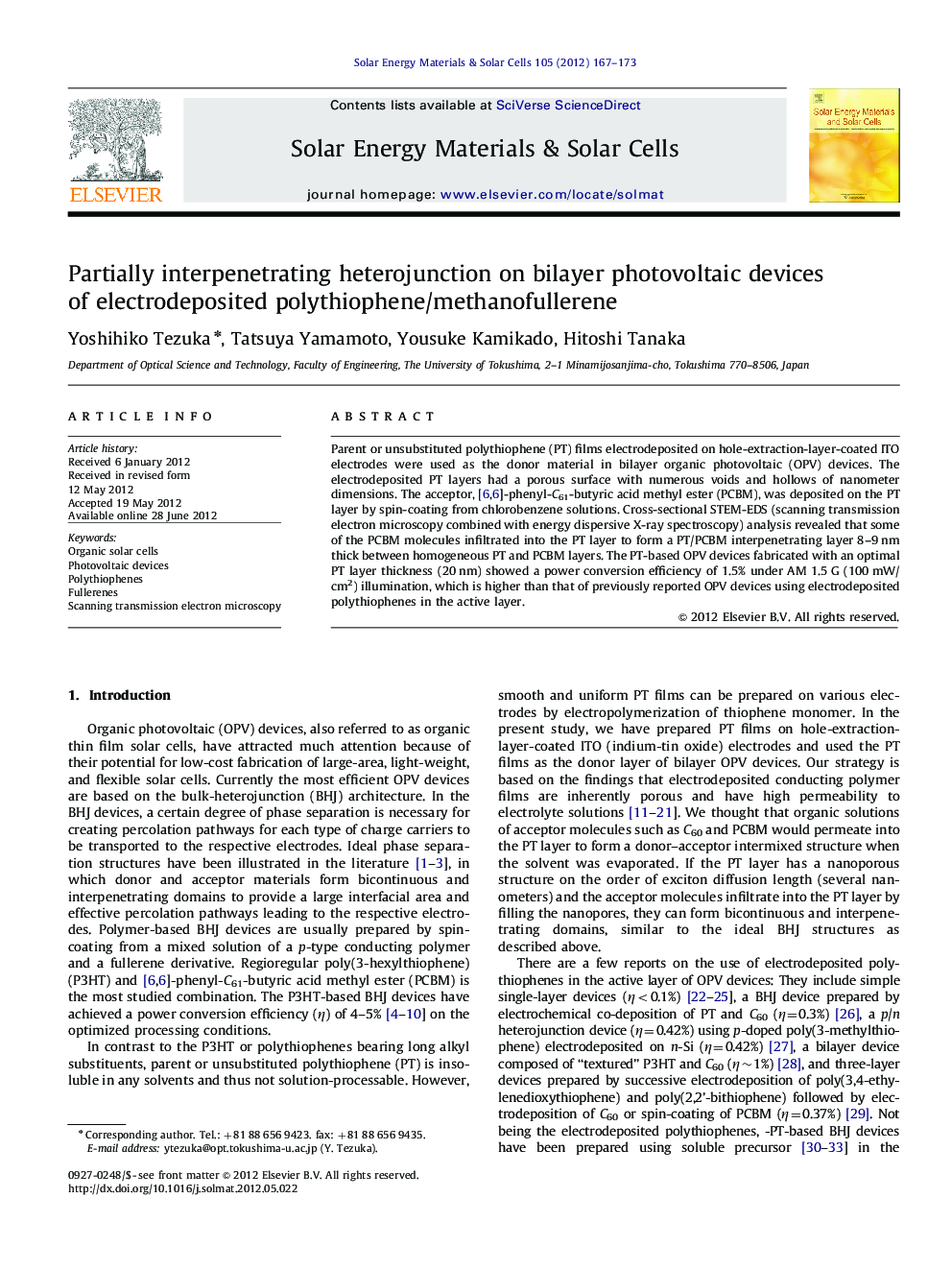| Article ID | Journal | Published Year | Pages | File Type |
|---|---|---|---|---|
| 78964 | Solar Energy Materials and Solar Cells | 2012 | 7 Pages |
Parent or unsubstituted polythiophene (PT) films electrodeposited on hole-extraction-layer-coated ITO electrodes were used as the donor material in bilayer organic photovoltaic (OPV) devices. The electrodeposited PT layers had a porous surface with numerous voids and hollows of nanometer dimensions. The acceptor, [6] and [6]-phenyl-C61-butyric acid methyl ester (PCBM), was deposited on the PT layer by spin-coating from chlorobenzene solutions. Cross-sectional STEM-EDS (scanning transmission electron microscopy combined with energy dispersive X-ray spectroscopy) analysis revealed that some of the PCBM molecules infiltrated into the PT layer to form a PT/PCBM interpenetrating layer 8–9 nm thick between homogeneous PT and PCBM layers. The PT-based OPV devices fabricated with an optimal PT layer thickness (20 nm) showed a power conversion efficiency of 1.5% under AM 1.5 G (100 mW/cm2) illumination, which is higher than that of previously reported OPV devices using electrodeposited polythiophenes in the active layer.
Graphical abstractFigure optionsDownload full-size imageDownload as PowerPoint slideHighlights► Unsubstituted polythiophene films electrodeposited on transparent electrodes were used as the donor material in bilayer organic photovoltaic devices. ► Electrodeposited polythiophene layers had a porous surface with numerous voids and hollows of nanometer dimensions. ► Cross-sectional STEM-EDS analysis revealed that some of the mathanofullerene molecules infiltrated into the polythiophene layer to form a polythiophene/methanofullerene interpenetrating layer. ► Optimized devices showed a power conversion efficiency of 1.5% under AM 1.5G (100 mW/cm2) illumination.
